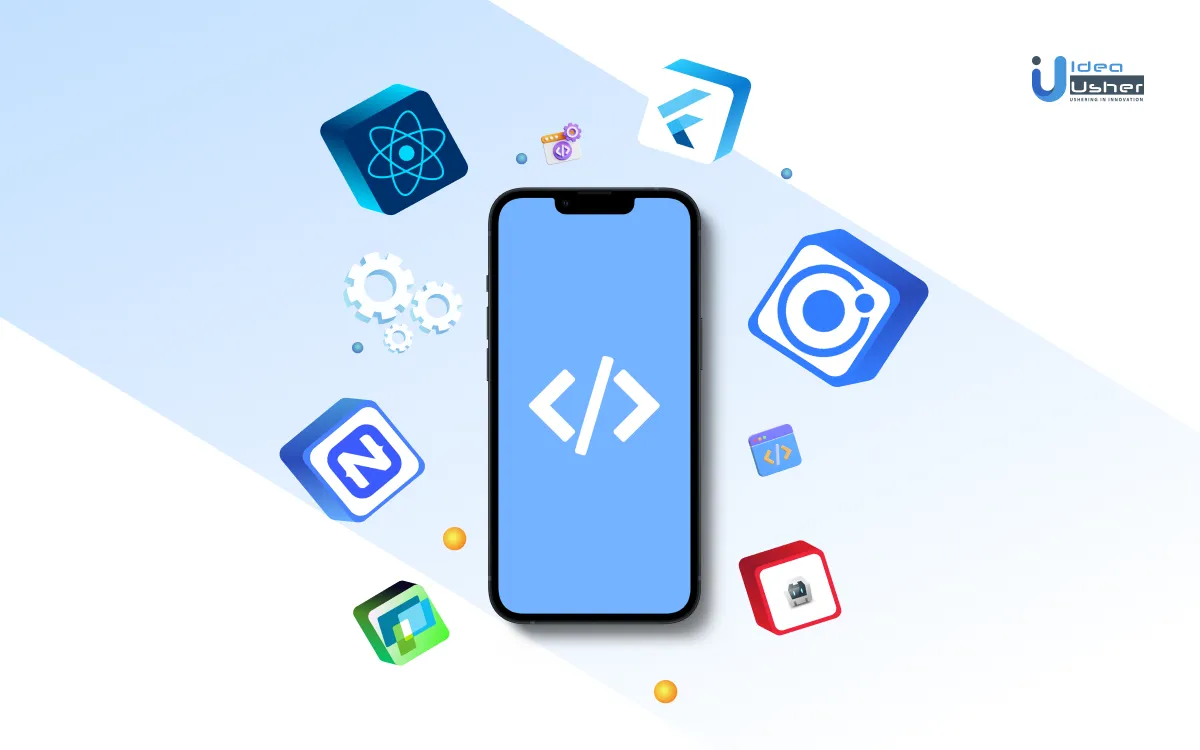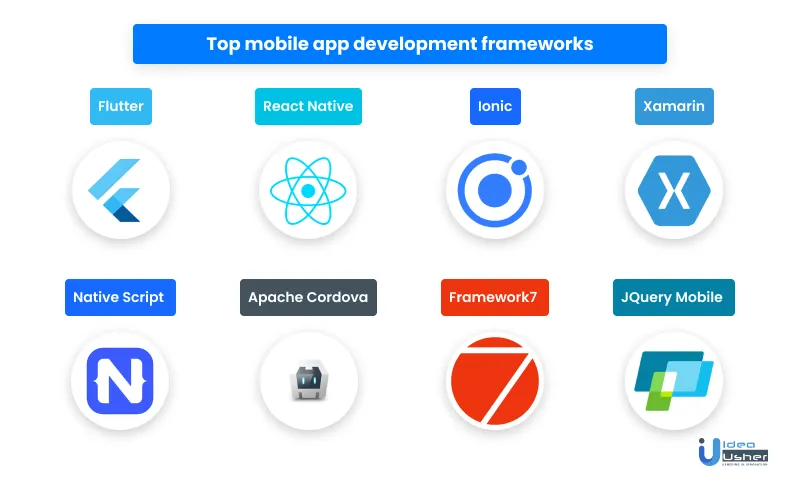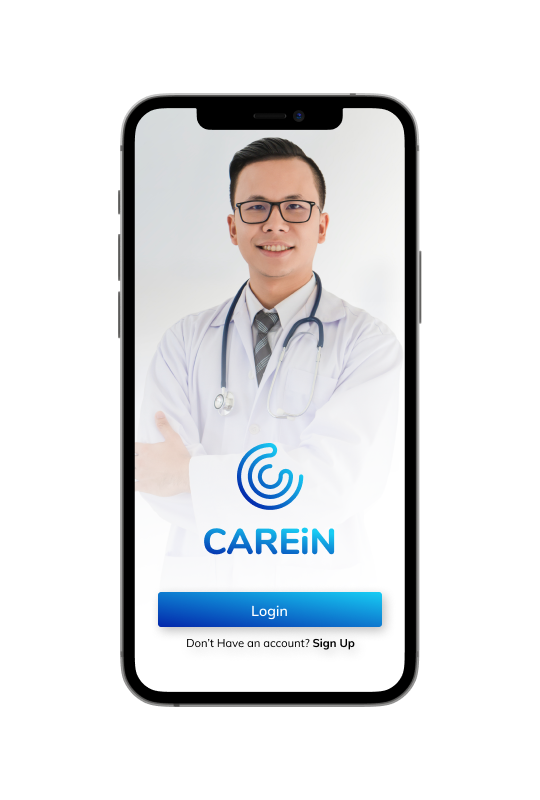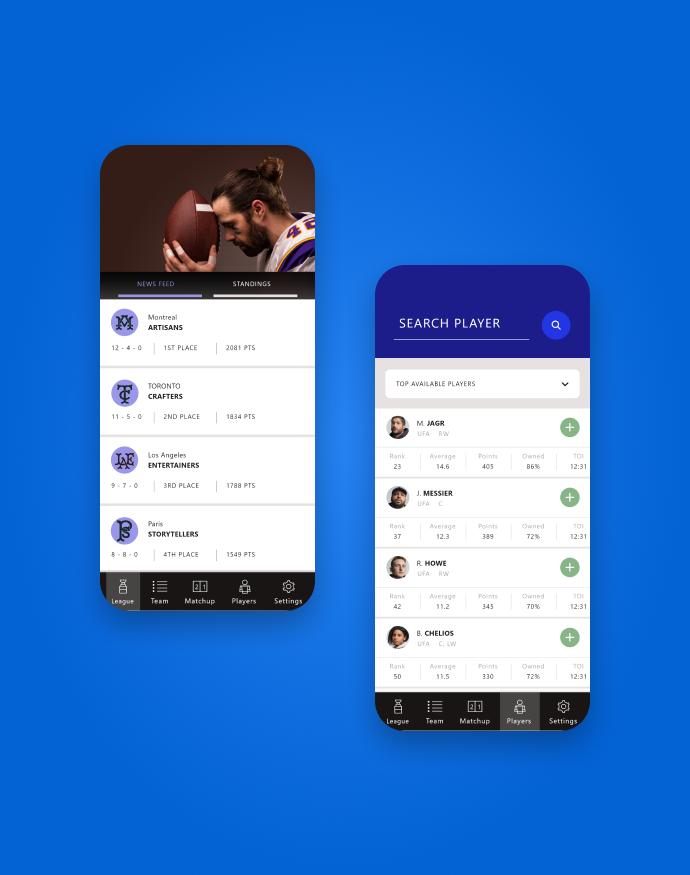
Mobile app development frameworks are the building blocks of mobile applications. They are used to integrate the various parts of a mobile app, such as user interface, backend services, and data storage. They help developers structure their projects and make them more modular and scalable.
With the technology becoming more accessible, mobile apps are only getting more popular daily. The global mobile app downloads in 2023 were 299 billion, according to Statista. Thus, entering the mobile apps market is an attractive opportunity for businesses.
However, simply entering the market doesn’t guarantee success. You require in-depth research, exceptional strategy, and extensive planning to succeed. App development frameworks can make your work easier.
This blog discusses the top app development frameworks developers can use in 2022.
What is a Mobile App Framework?
It is a comprehensive software creation platform equipped with a range of tools, software libraries, compilers, debugging utilities, and programming interfaces. These elements collectively empower developers to create mobile applications without the need for complex computer languages. Instead, developers can leverage their knowledge of web-based programming languages like HTML, CSS, or JavaScript to build compelling and feature-rich apps.
The core functionality of a mobile app framework lies in its ability to streamline the app development process. By providing a structured environment and pre-built components, developers can focus on crafting the application’s source code rather than worrying about the underlying complexities of different mobile devices and platforms.
Types of mobile app development frameworks
App development frameworks help developers build fully-functional apps without starting from point zero. These frameworks allow developers to add more details like images, animations, gestures, transitions, etc. to their code and offer a sustainable environment for custom mobile app development.
There are three major types of app development frameworks, which we have discussed below.
1. Native app development framework
These frameworks help to develop native apps for a single dedicated platform. These frameworks are designed to fulfill the requirements of a particular operating system like iOS, Windows or Android.
2. Web app development framework
These frameworks are designed to build applications for web APIs, servers, and services.
3. Cross-platform app development framework
These hybrid frameworks allow developers to build apps using a single codebase for multiple platforms. They speed up the development process and eliminate repetitive tasks.
Cross-platform frameworks are gaining popularity because of their several advantages. Let’s learn more about this type of framework in detail.
What are cross-platform mobile app development frameworks?
Cross-platform app development frameworks are software that helps to build mobile apps for multiple platforms using a single codebase. They include compilers, debugging tools, programming interfaces, and more to help develop mobile apps.
Mobile app development frameworks allow the developers to build mobile apps without starting from scratch. They can use the various components available in the frameworks to develop aesthetic, functional, and user-friendly apps.
Benefits of cross-platform app development frameworks
Cross-platform app development frameworks have several advantages. Some of them are as follows:
1. Code Reusability
Cross-platform development frameworks allow the developers to write a single code for Android and iOS apps. Writing a single codebase eliminates repetitive tasks and speeds up app development.
Additionally, the developers need less time to learn the programming languages as they do not have to focus on learning different languages for different platforms. These frameworks also help to resolve bugs and other issues faster.
2. Cost-effectiveness
Native platform app development requires multiple teams with different skill sets, which becomes time-consuming and expensive. Going ahead with cross-platform development significantly reduces the cost as only a single team with common technical knowledge is required.
3. Quick development
Cross-platform development allows you to complete the development process quickly. Thus, the app can be launched in the market faster, and you can gain timely market feedback. It would help you enhance your app and fix the bugs and issues as soon as possible.
4. Consistency
Cross-platform development frameworks ensure brand consistency across apps on different platforms. Although the navigation will differ on various platforms, the overall interaction and brand image will remain the same.
5. Wider market reach
Developing a single app for multiple platforms helps you gain a wider market reach as the app becomes available on both Android and iOS platforms. The users of both these platforms can access the app, which will improve your brand engagement, strengthen your market presence, and improve your overall product.
Overview of the top mobile app development frameworks
Mobile app development frameworks provide several benefits like speed, quicker bug fixes, cost-effectiveness, and more. These frameworks help the developers access several in-built UI elements, compilers, debugging tools, etc.
Here are the top eight mobile app development frameworks that developers mostly use.

1. Flutter
Flutter is a popular open-source framework developed by Google. It helps to build native apps for both iOS and Android using a single codebase. It is a unique software development kit (SDK) for cross-platform app development that helps to create apps with a native look and feel.
This framework is featured with fully customizable widgets, a rendering engine, testing and integrating APIs and tools to develop and deploy appealing apps in a short period. It uses Google’s own programming language, Dart, to create apps for multiple platforms.
Critical features of Flutter:
- Built-in material design
- Hot reload
- Flexible UI
- Google Firebase support
- Built-in Cupertino widgets
- Rich motion APIs
- Native app-like performance
Popular apps developed using Flutter:
- Google Ads
- Alibaba
- Cryptograph
- Reflectly
2. React Native
React Native is an open-source, cross-platform development framework developed by Facebook. It allows developers to create apps with a native look and feel for Android and iOS. It provides a set of cross-platform native components like views, text, images, etc.
One of the critical reasons why React Native is famous is faster development and deployment. This framework also has reusable components, integration with third-party plugins, and component-based GUI for front-end applications. It uses JavaScript to develop scalable apps for both platforms.
Critical features of React Native:
- Reusable components
- Declarative API for predictive UI
- Low-code
- Live reload
- Support for third-party libraries
Popular apps developed using React Native:
- Tesla
- Airbnb
- Skype
3. Ionic
Ionic is a mobile app development framework that allows you to build cross-platform apps with HTML, CSS, and JavaScript. It’s specifically designed to create high-performance hybrid apps on iOS and Android.
The best part about this framework is that it gives you access to many tools. Many components are available, each with its own set of features. You can choose from a wide range of controls that will help you create your desired app.
Critical features of Ionic:
- Native capabilities for Android, iOS, and Windows Phone
- Improve performance through asynchronous rendering and GPU acceleration
- Complete control over app building
- Cordova plugin
- JavaScript components
- Ion-ripple-effect
Popular apps developed using Ionic:
- Instant Pot
- MarketWatch
- Amtrak
- Sworkit
4. Xamarin
Xamarin is a mobile application development framework that allows developers to build native applications for Android and iOS. It is a cross-platform development framework that enables developers to build mobile apps using C# and Visual Studio.
One of the main features of Xamarin is its ability to connect with existing Microsoft services such as Azure and Office 365. It means that developers can take advantage of all the tools they’re already familiar with and integrate them seamlessly into their apps.
Critical features of Xamarin:
- Versatile backend infrastructure
- Diagnostic tools
- Application loader
- Android SDK manager
- Google emulator manager
- Full development ecosystem
Popular apps developed using Xamarin:
- Captio
- The World Bank
- Azure
- Microsoft News
5. Native Script
NativeScript is a framework for building native mobile apps using HTML5. This framework makes it easy to create sophisticated mobile apps that look and feel like native iOS, Android, and BlackBerry applications.
NativeScript is built on the open source AngularJS framework from Google. It provides an easy way to create rich user interfaces with full-featured animations, gestures, and transitions.
Telerik created the framework with help from the Mobile Web Initiative (MWI), which encourages developers to create cross-platform mobile projects using HTML5 technologies.
Critical features of Native Script:
- Native user interface without WebViews
- Actionable plugins and customization
- Bundle workflow
- Kendo themes assistance and code sharing
- AndroidX support
- Robust backend support
Popular apps developed using Native Script:
- OSS Weather
- Navadra
- Workbox
6. Apache Cordova
Apache Cordova is an open-source framework that allows you to build native mobile apps using web technologies. It includes plugins for many popular mobile operating systems, including iOS and Android. Apache Cordova apps are written in JavaScript and HTML5, which means they can be deployed to any platform that supports those tools.
Cordova is an excellent choice for developers who want to start building mobile apps without using any special tools. You can ensure your project will work on every device by using Cordova’s cross-platform capabilities and its ability to integrate with other tools like PhoneGap or Ionic Framework.
Key features of Apache Cordova:
- Command Line Interface (CLI)
- Third-party app management tools
- Cordova core components
- Cordova plugins
Popular apps developed using Apache Cordova:
- Localeur
- SparkChess
- Untappd
7. Framework7
Framework7 is a development framework that allows you to create high-quality, professional apps quickly. It takes care of all the work for you, so you can focus on your app’s look, feel, and functionality without worrying about how to build it. It also comes with many pre-built components, making it easy for beginners to get started.
The Framework7 mobile app development framework comes with over 200 components, which allow you to build apps quickly without having to write code yourself. You can import these components into your code base or use them directly within your projects. The components are designed to be well-suited for native iOS and Android apps.
Critical features of Framework7:
- High-performance and page animation
- Built-in grid system layout, FastClick library, and Helper libraries
- Pre-styled widgets
- Clear JS API and flexible router API
Popular apps developed using Framework7:
- My Shopper
- GoDial
- PricePoint
- Rabbit Mail
8. JQuery Mobile
JQuery Mobile is a mobile app development framework for creating responsive, touch-enabled web apps accessible on all devices. It uses CSS3 and HTML5 to build non-invasively changeable mobile web pages. It enables you to use any existing framework or library, like jQuery, AngularJS, Backbone.js, or KnockoutJS—or write your own code in JavaScript.
Using JQuery Mobile instead of an existing framework will save time and money because you don’t have to learn how to use another library. The framework can handle all of the complicated steps of building an app (including images, forms, and events). Thus, you can focus on making your app great instead of learning how to handle HTML5 elements in JavaScript.
Critical features of JQuery Mobile:
- Progressive enhancement and graceful degradation
- Accessible Rich Internet Applications (ARIA)
- Theming and UI widgets
- Automatic initialization
- Simple API
Popular apps developed using JQuery Mobile:
- Slideshare
- Dodge
- Stanford
- OpenTable
Takeaway
Mobile app development frameworks are a great way to quickly get an app up and running. They can also be used to create a practical learning experience for users and provide them with the tools they need to develop their own apps. These frameworks provide the architecture, design, and user experience aspects of your mobile application that you need to make it stand out from the crowd.
In conclusion, app development frameworks are a great way to ensure that your app is up to snuff. They help you avoid the mistakes that occur while developing an app by providing guidelines and best practices to help you create an app that is both functional and aesthetically pleasing.
If you wish to create a custom app using the latest app development frameworks, you can get in touch with Idea Usher. Our experts are skilled in developing apps for both Android and iOS. With a collective experience of more than a decade, we are known to deliver cutting-edge digital solutions and custom app development services.
Contact us and get your app developed now!
E-mail: [email protected]
Phone Numbers : (+91) 946 340 7140, (+91) 859 140 7140 and (+1) 732 962 4560
Frequently asked questions
Here are some exciting FAQs about mobile app development frameworks.
Q. Which is the best technology for mobile app development?
A. Developers use several technologies and frameworks to build exciting and user-friendly apps. The best framework depends on your use case and requirements, as each has pros and cons. The best technology for one developer may not be helpful for another.
Q. Which framework is used for Android app development?
A. Some popular frameworks for Android app development are listed below:
- Flutter
- React Native
- Ionic
- Apache Cordova
- Xamarin
Q. Is React Native better than Flutter?
A. Both the frameworks have different suitability and use cases. The features, advantages, and disadvantages of both frameworks are different.
Flutter is preferable for big apps and apps that need native programming, while React Native is preferable for apps that can benefit from its plug-and-play modules.
You need to analyze the various factors associated with both frameworks and compare the two to decide which is better.








Mayank Sharma